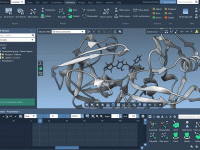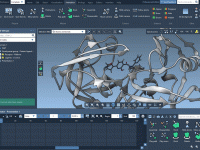One Click to Optimize Transition Paths with P-NEB in SAMSON
When analyzing molecular mechanisms, understanding how a system transitions between two conformations is often just as important as knowing the endpoint structures. But finding realistic, physically meaningful paths between such conformations can be a significant challenge. Molecular modelers face this…












